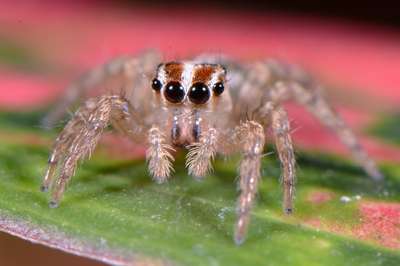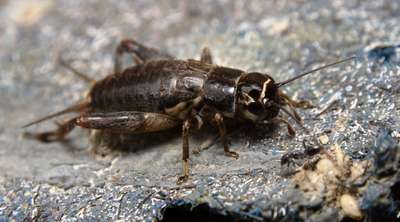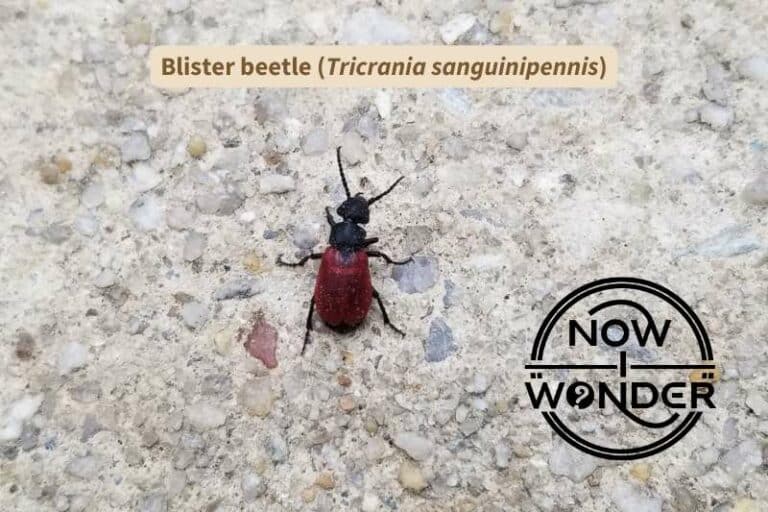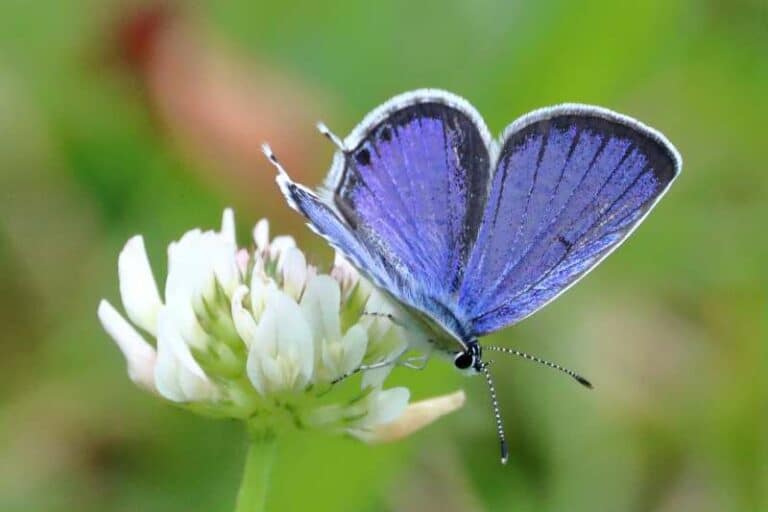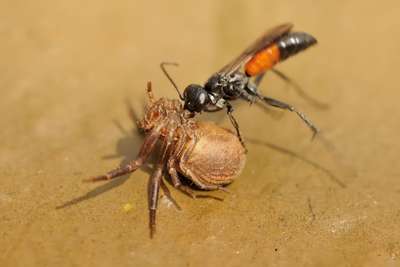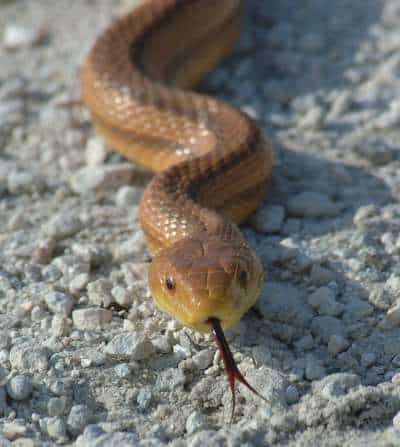Turtles have existed on earth for about 200 million years and, like all reptiles, evolved to live on land originally. When most people picture a turtle, they envision a slow moving, four-legged creature trundling along beneath a bulky, heavy shell. So it is natural to wonder what happens to a turtle submerged in water. Can turtles swim?
The majority of turtle species swim well. Freshwater turtles such as mud, musk, pond, and marsh turtles are excellent swimmers; marine sea turtles live their entire lives swimming in the oceans. Land-based turtles, such as tortoises in Family Testudinidae and some box turtles, are poor swimmers.
The majority of the 270 known species of turtles worldwide live in water; to do so, they had to transition from living on land to living in water. This post explores three informal group of turtles found in and near the southeastern United States and how well or poorly each kind swims.
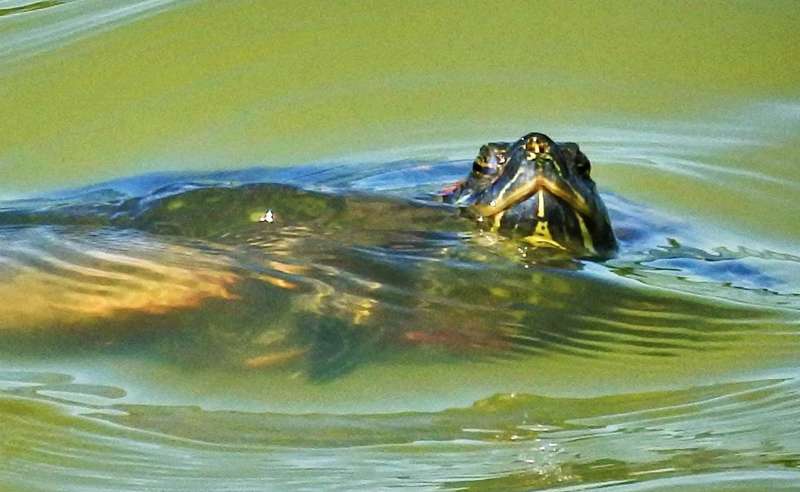
Here is a brief summary of swimming turtles found in the southeastern United States:
| Turtle Family | Common Name | Example Species | Informal grouping | Usual Habitat |
| Chelydridae | Snapping turtles | Snapping turtle (Chelydra serpentina) | Semi-aquatic | Fresh and brackish water with soft mud bottoms and vegetation. |
| Kinosternidae | Mud and musk turtles | Mud turtle (Kinosternon subrubrum) | Semi-aquatic | Shallow, slow-moving, fresh and brackish water with vegetation. |
| Emydidae | Pond, marsh, and box turtles | 1. River cooter (Pseudemys concinna) 2. Pond slider (Chrysemys scripta) | Semi-aquatic | 1. Streams, rivers, large lakes. 2. Sluggish water with soft bottoms and vegetation. |
| Emydidae | Pond, marsh, and box turtles | Eastern box turtle (Terrapene carolina) | Terrestrial | Moist land, especially wet meadows, pastures, and forests. |
| Testudinidae | Tortoises | Gopher tortoise (Gopherus polyphemus) | Terrestrial | Dry, sandy areas |
| Chelonidae | Sea turtles | Loggerhead (Caretta caretta) | Aquatic | Marine, especially in warm waters |
| Dermochelyidae | Leatherback turtles | Leatherbacks (Dermochelys coriacea) | Aquatic | Marine, especially warm, tropical waters |
| Trionychidae | Softshell turtles | Spiny softshell (Trionyx spiniferus) | Semi-aquatic | Small creeks and ponds, large lakes. |
Terrestrial turtles
Terrestrial turtles live on land and generally enter the water only during extremely hot weather when they need to cool down or under duress when their habitat is flooded by a weather event. While most species can float in water and keep their heads above water to breathe, they are poorly adapted to actually swimming as a means of locomotion.
Terrestrial turtles usually have heavy, domed shells which are bulky and ungainly in water, and blunt feet with short toes that fail to scoop water and propel them efficiently.
Both characteristics mean that a land tortoise or box turtle must expend much more energy when submerged in water than it otherwise would so these animals tend to avoid deep water that prevents them from maintaining contact with the ground.
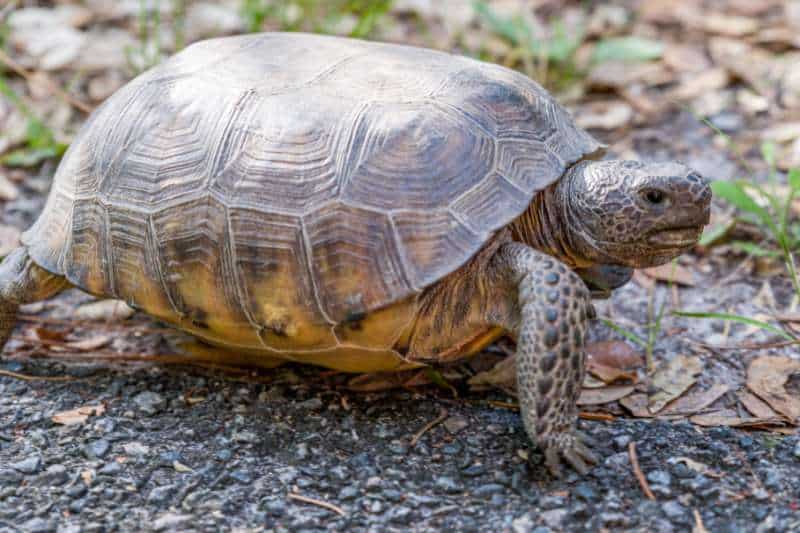
Semi-aquatic turtles
Semi-aquatic turtles are those that split their time between swimming in freshwater ponds, lakes, streams, and rivers and walking on dry land.
These turtles are much better adapted to swimming than their land-based cousins. Their shells tend to be flatter and more streamlined, which increases their speed and maneuverability in the water while minimizing the energetic cost of swimming.
They also have longer toes than purely terrestrial turtles and their toes are webbed. The webbing on each foot increases surface area and lets the turtles push against more water with every stroke, which aids propulsion.
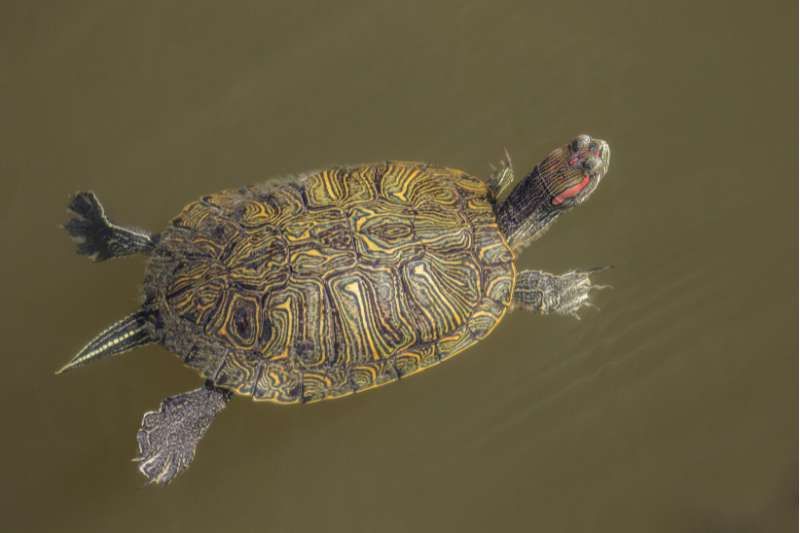
Aquatic turtles
Sea turtles are the stars of the turtle world and the most aquatic of all the turtles.
Male sea turtles almost never leave the water but, like all turtles, sea turtles must lay their eggs on dry land. Every year, female sea turtles drag themselves onto the beach, excavate nests, deposit their eggs, and return to the water.
In turn, their hatchlings dash for the water as soon as they hatch. Those who survive the gauntlet of waiting predators and reach the safety of the water do not leave unless they are females and ready to lay their own eggs.
These brief moments represent just a tiny portion of a sea turtle’s life; for all intents and purposes, a sea turtle lives its entire life in water.
One major characteristic that differentiates fully aquatic sea turtles from their semi-aquatic, freshwater turtle cousins is that marine turtles have flippers rather than legs and feet. Over many millions of year, sea turtles limbs elongated and evolved into flat, strong flippers that much more efficient at scooping water than even the webbed feet of freshwater turtles.
Sea turtles use their front flippers to propel themselves through water primarily, with the rear flippers acting mostly as rudders. The flippers function as oars and the rowing motion is so smooth that sea turtles look like they are flying through the water, rather than simply swimming. But their swimming is not only beautiful to watch; it is also efficient and powerful. Sea turtles can swim more than 18.6mph (30km/hr) (Halliday and Adler 2015).
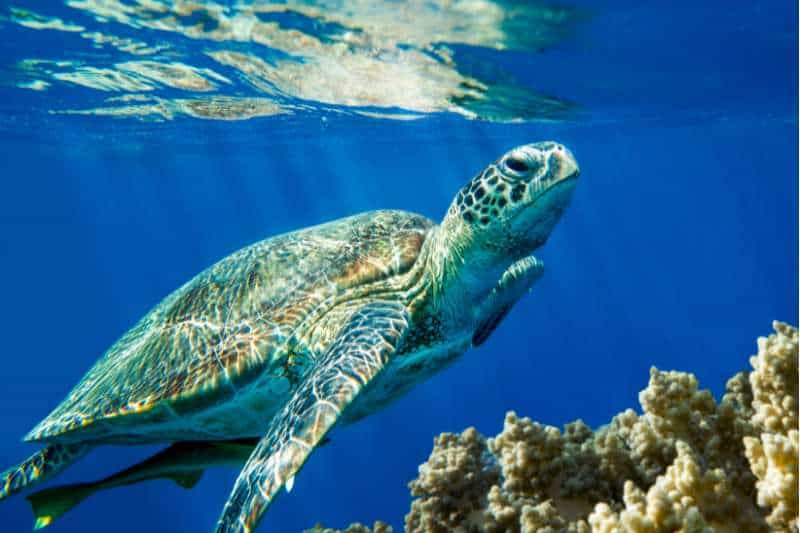
Green sea turtles (Chelonia midas) and leatherbacks (Dermochelys coriacea) are sometimes found off the coast of the southeastern United States and even nest on the seashores occasionally, but the most common sea turtle seen in North Carolina is the loggerhead sea turtle (Caretta caretta).
Loggerhead turtles swim and dive very well. While most dives last between 30 to 40 minutes, a loggerhead sea turtle in the Mediterranean holds the record for the longest dive, with a dive that lasted more than 10 hours (Iverson et al. 2019).
Can turtles swim backwards?
Aquatic turtles can swim backwards easily. Healthy freshwater and marine turtles position themselves in water easily by adjusting how they push against the water. To swim backwards, turtles row their forelimbs or front flippers toward their heads instead of toward their tails.
Semi-aquatic and aquatic turtles hunt or forage in water for food, with freshwater species eating snails, insects, other invertebrates, and plants, and sea turtles hunting jellyfish (leatherbacks), sea urchins, crustaceans, and plants. Turtles can control their position in water by using their webbed feet or flippers to adjust their direction as needed, up to and including swimming backwards.
Can turtles swim upside down?
Healthy aquatic turtles can swim upside down but will not voluntarily do so; they right themselves quickly if flipped over in water. Terrestrial turtles swim poorly in any position. Turtles who swim upside down for more than a few strokes of their limbs are usually ill, drowning, or both.
With the few exceptions represented by the tortoises and some box turtles, modern turtles found in the southeastern United States rely on aquatic habitats for their livelihoods – despite breathing air and needing to lay their eggs on land. Whether full-time residents like the marine sea turtles or part-time residents like the freshwater turtles, these reptiles thrive in water, first and foremost because they can swim and swim well.
Related Now I Wonder Posts
To learn more about turtles in general, check out these other Now I Wonder posts:
To learn more about terrestrial and freshwater turtles, check out these other Now I Wonder posts:
- Eastern Box Turtle FAQs
- Are Eastern Box Turtles rare?
- Can you find turtles in rivers?
- River Cooter Turtles: Almost a research enigma
References
Behler JL, King FW. 2020. National Audubon Society field guide to reptiles and amphibians: North America. New York (NY): Alfred A. Knopf.
Halliday T and Adler K, 2015. Firefly Encyclopedia of Reptiles and Amphibians. 3rd ed. Windmill Books. Andromeda International.
Iverson AR, Fujisaki I, Lamont MM, Hart KM. 2019. Loggerhead sea turtle (Caretta caretta) diving changes with productivity, behavioral mode, and sea surface temperature. PLoS One. 14(8). DOI:10.1371/journal.pone.0220372

